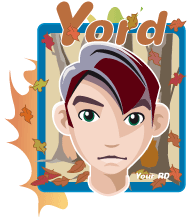City kids connect with public lands
YOSEMITE NATIONAL PARK - Jorge Castaneda knelt on a rocky ledge with a map of the Sierra Nevada spread before him. „There aren’t street names”, the 18-year-old city kid said only half-jokingly just before his first backpacking trip. „How are we supposed to read these maps?”


Audiostream:


Castaneda was with a group of young men from inner-city Oakland and Los Angeles heading into the Yosemite backcountry for a five-day, 20-mile excursion sponsored by an outdoor education program called WildLink.
The group’s aim is to help them forge a connection with public lands that will keep them coming back, and hopefully beef up the ranks of those who spend their free time hiking, climbing, fishing or otherwise enjoying open spaces. The goal is especially important because national parks face twin concerns: Lack of diversity among visitors and fewer of them overall.
A 2004 survey by the U.S. Forest Service showed that 92.7 percent of those who visited national forests over a three-year period were white. At the same time, the number of people visiting public lands is dwindling. The National Park Service found in 2006 it had nearly a million fewer visitors than the year before, and 14.5 million fewer than in 1999.
Experts say a range of factors are contributing to the drop in visitor numbers, from gas prices to shorter vacations. But „it may be that a certain portion of our decline is because population growth is being driven by people who are not traditional national park users”, said Jim Gramann, a social scientist with the park service.
A tenuous connection between new generations of Americans and public lands has potential consequences not just for individuals who miss out on the physical and mental benefits of being outdoors, but also for the future of open spaces, say those committed to fostering that relationship.
„We have to make sure the people who will be voting in the future care about wilderness”, said park ranger Cynthia Ramaciotti, one of the leaders of the backpacking trip and a coordinator with WildLink.
Through programs such as WildLink are popping up around the country, many experts agree it’s hard to change recreation patterns and perceptions.
A National Park Service survey in 2003 showed Americans of all backgrounds gave the same reasons for staying away from public lands - cost, distance, not knowing what to do there and lack of interest. But some differences emerged, giving a sense how cultural perceptions of the outdoors might vary among groups.
Blacks were significantly more likely to say they received poor service from park employees or that they felt uncomfortable while visiting parks. Hispanics expressed greater concern than others about having to make reservations too far in advance and about personal safety while outdoors.
Experts say these perceptions can be changed, but only through a concerted effort. „It takes more than one week outdoors”, said Gramann.
Before hitting the trail, the young men on the WildLink Yosemite trip learned the basics of surviving outdoors, such as how to read a compass, use a bear canister, filter water and use a camp stove.
Public lands administrators also are rethinking how land is used, and what information different visitors might find interesting. „One reason why national parks may be under-visited by some populations is that they’re not telling stories that are relevant to that population”, said Gramann.
Whatever it takes to make the connection between people and land, it seemed to be working for the young men hitting the trail. They cracked jokes as they hiked, and when it came time to stop for lunch, shared food each had carried.
„Out here there’s the feeling you can count on someone else”, said Pedro Sarmiento, who started participating in WildLink in 2003, and now helps coordinate trips. „More kids should experience this at least once in their lives.” (AP)


